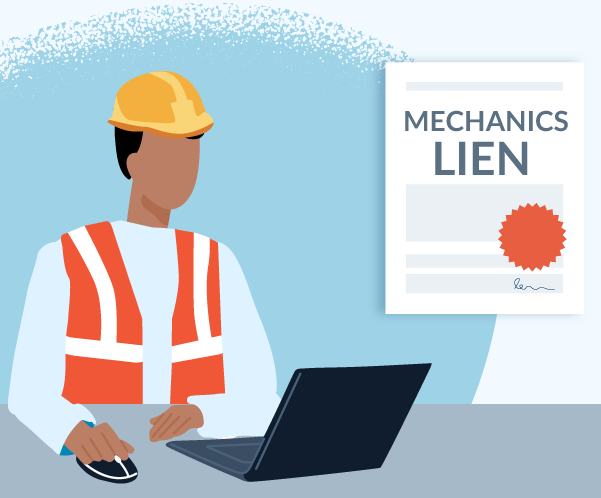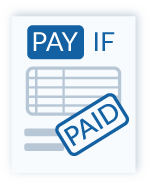Today, at the Construction Financial Management Association (CFMA) Annual Conference, experienced construction industry financial professional, Steven Lords, is presenting an all-day “mini-conference” on Cash Management.
Cash management is a highly valuable topic for construction participants. There are obvious reasons why cash is important to any business, but there are additional layers of value in the construction industry where participants must balance cash challenging situations and must maintain positive cash flow to ensure access to capital, bonding capacity, and to meet contractor qualification criteria.
This article focuses on a few interesting comments from Mr. Lords’ presentation and slide deck that should assist the reader in developing successful cash management strategies.
“CFOs or Controllers Can Generate More Profit From Effective Cash Management Than Project Managers Can On Their Projects”
This statement is made in the introduction to Mr. Lords’ written materials for the session and it makes a terrific point. The speaker is in a position to authoritatively make such a remark as well, having acted in a financial capacity in the construction industry for over twenty-five years. His experience includes acting like a CFO for commercial general contractors and specialty subcontractors.
Companies rarely look at finance as a revenue or profit generating function. Instead, most companies credit the sales process, or even the performance process, when both the top and bottom line perform well. Unfortunately, this often even leads to tension between sales professionals and credit, collection, and finance professionals within a single organization.
Nevertheless, companies should think carefully about this particular comment. CFOs and controllers can generate more profit through intelligent cash management on a project than project managers.
Further, if you want to compare the finance function to the sales function, generating additional profit is equal to generating ten times or more of that amount in revenue. Mr. Lords’ comment could be extended, therefore, suggesting that CFOs and Controllers can compete with salespeople in generating company revenue by simply managing cash better.
Cash Management is NEGOTIATED
Savvy companies leverage their negotiating ability to get the best terms from their vendors and customers, and then to push the limits on those terms. So, how does a company go about managing cash? What is Mr. Lords’ first item of instruction? He starts his cash management session by telling participants that cash management is “negotiated.”
It’s easy to think about cash flow as a static concept. Cash flows in and out of a company pursuant to factors subject to only limited control: market conditions, payment terms with vendors, invoice terms with customers, and the like. At the CFMA Cash Management mini-conference, it’s suggested that cash is affected by the following:
- Economy
- Technology
- Market Perceptions
- Entity Perceptions
- Negotiating Ability
- Choice of Business Parties
Ah, ha! While some of these items are largely uncontrollable (i.e., economy), the majority are subject to control.
Companies and financial managers choose the technology used to manage and optimize cash. Companies choose their business partners. And finally, savvy companies leverage their negotiating ability to get the best terms from their vendors and customers, and then to push the limits on those terms.
Gain Control Over Cash Flow Factors And Negotiate Your Best Position By Minimizing Assets and Maximizing Liabilities
Managing cash flow really boils down to what tangible things companies can do to get cash faster and keep their own cash longer; and that, in turn, simply refers to the following:
- Billing: What technology does the company use to bill most efficiently? What are the terms of payment required from customers? What are the procedures for collecting on receivables?
- Paying Vendors: What terms does the company require from vendors? How are vendor payments handled?
- Capital Access: Where does the company have access to capital? What is the cost of that capital access? What are the procedures for when this capital is used, and how does that fit into the waiting period on receivables and the payment period on vendor invoices?
- Deliverability of Money: Who is delivering the money from one source to another (i.e. USPS? EFT?), and that impact does that have on cash flow?
- Who Are The Customers? Are the customers solvent enough to pay according to the required terms? What does the company do to limit its customer base to folks who will pay according to terms?
- Construction Cash Realities: Construction participants sometimes have to wait for cash from the owner or lender, or are restricted from collecting – despite their terms – by the terms of the underlying construction contracts. What are the company’s policies concerning evaluating these risks, and setting forth the parameters of risk the company will accept?
All of the above bullet-point items are adjustable and negotiable factors that affect cash management.
Accounts receivables are generally the largest single Cash Flow component in the construction industry. One interesting note about Mr. Lords’ presentation is that he called accounts receivables “generally the largest single Cash Flow component.”
This is a pretty large statement and should motivate construction financial managers everywhere to think long and hard about their receivables management processes.
Receivables management is a topic of its own, and an intricate issue in the construction industry context. Anyone in charge of receivables performance, however, should understand Mr. Lords’ directions in managing cash. He states that there are two simple rules to increase Cash Flow:
1) Accelerate receipts and decelerate payments; and
2) Minimize assets and maximize liabilities
These two rules are not secret – this is Cash Management 101. And that is precisely the problem addressed by this article’s next section.
Mastering The Cash Flow Catch 22 In Construction
The real challenge is in how widespread the two cash flow rules are within company cash management procedures. If everyone is adhering to these two rules, in other words, that makes it exponentially more difficult to achieve success. One company’s effort to “accelerate receipts” is met with another company’s efforts to “decelerate payments” and vice versa.
What can a company do to actually “accelerate receipts?” How can a company “accelerate receipts” when their customers are simultaneously “decelerating payments?”
The answer is a basic tenant of receivables collecting: prioritize your accounts. And interestingly, goes back to one of Mr. Lords’ points in this Cash Management mini-conference: negotiation.
When an organization is “decelerating payments,” they are not refusing to pay all of their bills. Instead, they are making choices about which bills to pay and when. Those companies who have a hard time accelerating their receipts and getting open receivables paid simply do a poor job of negotiating their position to get paid. These companies are bad at prioritizing their accounts in the eyes of the customer.
There are many ways to prioritize accounts and accelerate receipts, and each financial manager is going to favor a particular theory or practice. Nevertheless, one thing can be said for certain: security rights matter, and they matter in getting a company’s receivables prioritized.
General contractors, owners, lenders, and sureties are very, very interested in mitigating their own financial risk. As we’ve explored at length on this publication, they employ various financial risk shifting tactics to insulate themselves from this risk. When a supplier, subcontractor, or other company is floating out on a project with security rights intact, that presents a “financial risk” to the top of the contracting chain.
The top of the chain is in charge of disbursing project funds. It would be naive to believe that these parties do not take a party’s security status into account when deciding which payments can be “decelerated.” This is absolutely done, and in fact, software products from Sage, Textura, and elsewhere are all helping these parties do it.
Conclusion: Negotiate Your Cash With Security And Watch Profits Grow
Mr. Lords’ presentation and materials on cash management were spot-on, as has been all of his published materials about managing cash flow in the construction industry. The lessons boil down to a few key takeaways.
First, CFOs and Controllers are in more control over company profits and the bottom line than appears at first blush. Second, intelligent cash management is required to positively impact organizations. Third, intelligent cash management is about understanding cash flow and negotiating companies into the best position. And finally, fourth, receivables are the single largest cash flow component, and getting receivables paid typically boils down to getting accounts prioritized.
We love security rights here on the Lien & Credit Journal, and it’s absolutely true that strong security positions translate into priority treatment from companies, enabling companies to actually “accelerate” cash flow, without being impacted by a customer’s desire to “decelerate payments.”



